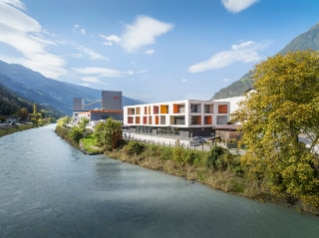The world of fashion and design has come up against some significant challenges within the last few months. Fashion authority Fern Mallis, who - among many other things - created New York Fashion Week and who was the Executive Director for the Council of Fashion Designers of America from 1991 to 2001 and author of the popular series Fashion Icons with Fern Mallis, took some time to chat with Domus about how fashion has responded to the current state of events from Covid-19 to the civil unrest in the United States as well as the importance of the in-person connections that are made during runway fashion shows.
New York Fashion Week this year is September 14-16, a shortened schedule because of the health restrictions due to Covid-19 and it mostly was a virtual experience. “Fashion is an integral part of our culture just as architecture and design. Clothing tells a lot about time and place. Fashion designers are notorious for using their craft, skills and work to communicate what is going on, and what the world is currently about: when the economy was good the skirts were short, when the economy was bad skirts were long. Now the landscape of fashion has completely changed, with this pandemic everybody is being seen just from the waist up.” With many people now working from home and not going out, the computer screen has become the point of daily interaction, whether for work meetings, happy hours and even fashion shows. “A hoody has become an acceptable garment to go to work in and completely changed the landscape of fashion and maybe I have to credit – not thank – people like Mark Zuckerberg for this.”
How people now present themselves virtually for work and leisure has become significantly more casual from the comfort of their homes.“We're in a place where there's no script, you know.” What people wear though, some making a fashion statement or even a protest statement, “The first thing you do when you see someone is to look at their hair, look at their clothes and make a judgment - which isn't always the smartest thing to do. That’s how people communicate. Their clothing says a great deal. And now with the protests focused on civil rights and the Black Lives Matter movement in the United States, the clothing is even more message-driven. It is communicating what is going on and the changes people want to make.”
From protest statement t-shirts and facemasks with slogans to protective gear, all of these strengthen the message. “Designers will incorporate this social justice protest into their collections. We will see more 'combat' gear, whatever you are combating. If you follow me on Instagram you will see what I mean. The reactions to that post are fascinating to me.” It is almost as if fashion has become a political party itself and when we ask her how protests are actually influencing fashion, she replies that “protests are changing how everything is conceived, not just fashion. It is a protest moment that is not going to end any time soon. Everything is interconnected: the way people dresses, the way people live.”
Fashion designers have also responded to the current health crisis in a creative way. The face mask “has become the new accessory for the foreseeable future.” Fern jokes, “I have a new wardrobe full of masks now.” Early in the health crisis, some designers even stepped up to the plate to help fabricate masks and other items, such as face-masks, protective garments for health workers and even face shields. “Christian Siriano was the first American designer to jump on the bandwagon. He got in touch with the Governor’s office in New York and that spurred a lot of other designers on to help.”
Going back to how mainly virtual interactions have affected the world of fashion, our discussion also relates to architecture and interior design. “Everybody is working in their home, where they are spending unbelievable amounts of time - and money - trying to make it more workable, more comfortable and flexible. Now with Zoom, even with TV and entertainment people, you are seeing everyone in a corner of their home. That communicates almost more than what they are wearing. You start to see how they live and what their lifestyle looks like, from the screen on your computer. Most people seem to go in front of bookcases.” People are re-thinking how they want and need to use their spaces. A combination of work, play, rest and daily routines all have to be incorporated into their home, turning rooms that formerly had one primary function into multi-taking areas. This concept will most definitely be addressed in how living spaces are designed going forward.
Just like Fashion Week, design fairs have been cancelled or have gone completely virtual. We asked Fern how the virtual experience compares to the in-person. “The coming together of industries, whether it’s the Salone del Mobile, an American Institute of Architects convention, or Fashion Week, is very important. It’s about people interacting with people and there is so much creativity that comes out of that conversation. The spontaneity of interactions between people cannot be replaced. This season, it will be interesting to see how fashion week responds. I trust that there is enough creativity within the industry, involving everyone who is part of the discussion of what to create. But does that replace seeing the runway in person? Not really. Nothing replaces a really fabulous runway show, where everybody feels that what we are seeing something special. The power of the ‘together’ events, is not over. It is just on hiatus.”
Our final question regarded the intersection between fashion and design and how they can influence each other. “The way you live, the way you dress, down to your table top and the way you present food and hospitality, it’s all seamless to me. There are some designers, such as Tom Ford, who studied architecture. For a lot of fashion designers, architecture is very much a part of how they see fashion.”
Wrapping up, we asked Fern to recall her experience with the party called Beach, thrown in Fire Island Pines in 1979 that Domus profiled. “It was a shining moment for my friend, architect Scott Bromley. It was one of those nights you could never recreate again. It was made to raise funds for the fire department. It was a magical event where we talked about sustainability before anyone even knew what that meant. The wooden flooring used on the beach was cut in way that could be reused in building the houses out there. Everything was meant to be recycled. it literally was the last party before the AIDS came on the scene: 89% of the people who were there died from the disease. I am so proud to have been a part of that extraordinary event.”






